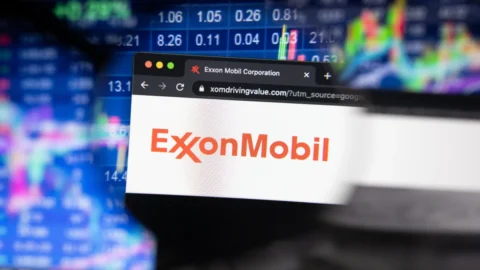RGWM Market Thoughts – May 10, 2019
On Sunday, President Trump sent an afternoon tweet that the current 10% tariffs on $200 billion worth of Chinese goods will rise 25% on this Friday; he also threatened to place another 25% on an additional $325 billion of Chinese goods “shortly”. As one would expect, the stock market did not act kindly to this news. Monday saw the market open steeply down from Friday’s close with a late rally bringing it to down -0.45% from Friday. On Tuesday, the market dropped another -1.65% followed by -0.16% on Wednesday. As of this morning, the tariffs already levied were raised as threatened, and the S&P 500 opened down another -0.24%. The apparent deterioration of potential successful negotiations has left its mark. Despite this recent hurdle in the market, the S&P 500 has delivered nearly 15% on the year to date. Fundamentals remain strong and the incentives remain for a trade deal to close for both the U.S. and China.
While the year has started strongly, the struggles at the end of 2018 when the market slipped into a correction have understandably left investors psychologically anxious; wary of any potential perceived weakness. However, it’s important to put these recent movements into the context of market history. This history clearly shows that market movements of over 2% and even 3% in a day are not as uncommon as one might think. It’s just our recency bias that suggests that they are; furthermore, market movements of over 1% are commonplace. Looking at just the last 5 years up to 2018, a period defined mostly by a lack of volatility, there have been 222 days in which the market has moved at least 1% in either direction. Of those days in that period, there were 49 days in which the market moved over 2% in either direction and with the exception of 2017, each of those years experienced at least one market movement of such magnitude. If we go back further, such as the period of 2008-2012, there were 275 days in which the market moved over 2% and 473 days in which it moved at least 1%. While that period obviously exhibited dramatic behavior, it still goes to show you that the market movement we’ve seen this week is far from abnormal.
Further alleviating our concerns with the recent market movement is the current state of the U.S. economy. Despite the concerns with trade and political drama, the economy remains strong and has exceeded the pessimism some anticipated from the government shutdown and the negative wealth effect generated from the Q4 2018 correction. Q1 2019 GDP grew 3.2% q/q (quarter over quarter) compared to 2.2% in Q4 2018 and substantially beat the consensus forecast of 2.3% for the quarter. The unemployment rate dropped to 3.6% in April, the lowest rate since December 1969, with nonfarm payrolls increasing by 263,000. Notable job gains occurred in professional and business services, construction, health care, and social assistance. While wage growth data was slightly weaker than expected, they still grew 0.2% m/m (month over month) and 3.2% y/y (year over year) painting a picture of a strong labor market that continues to tighten. While overall inflation (calculated by the Fed’s preferred measure the Headline Personal Consumption Expenditures) began to rise in March due to the oil price rebound, core PCE fell (core PCE focuses on non-energy related prices) bringing overall y/y growth to 1.5% still well off the target inflation rate of 2%. The Federal Reserve also maintained its target range for interest rates at its May meeting with Chairman Powell reasserting the economy’s health and a lack of present risk in financial conditions. Finally, the earnings picture for companies in Q1 2019 has also proven analyst estimates as too pessimistic. Around 82.7% of market cap has reported their data and so far 76% of companies have beaten on earnings.
Moving back to the subject of the state of U.S. China trade negotiations, the Vice Premier of China, Liu He, is due to land in the U.S. capital on Thursday afternoon and immediately engage in talks with President Trump’s top negotiator, Robert Lighthizer. In order to speculate as to what we should expect from these talks, it is important to ask a simple question: Have the incentives and stakes in these negotiations fundamentally changed? The answer to that question would appear to be a clear no. The U.S. President is already entrenched on the campaign trail and has the heat of election season quickly approaching. The Robert Mueller drama has evolved into an AG William Barr drama and the achievement of his two chief objectives, implementation of border security through a border wall and achieving a successful trade deal with China would go a long way towards a more compelling reelection campaign.
President Trump has consistently shown that he follows the stock markets very closely and ties their growth to the successes of the administration, and it is clear that the markets have been reactive to sentiment around the status of the trade deal. On the Chinese side, the data would indicate that a trade deal getting done is more critical for them than that of the U.S. In 2018, exports were equal to 18.3% of the Chinese nominal GDP (GDP unadjusted for inflation) with shipments to the U.S. amounting to 3.5% of GDP. In comparison, U.S. exports to China represent only 0.6% of our own GDP. China’s exports dropped 2.7% in April versus a forecasted 3% increase while imports unexpectedly rose by 4%; of those exports, shipments to the U.S. dropped 13.1% from a year earlier. While prevailing general theories in economics hold bilateral trade deficits as a matter of little importance, China’s external debt stood at $1.96 trillion dollars at the end of 2018 necessitating $100 billion annual payments to service foreign debtors. In order to pay for this debt, Chinese banks need hard international currency in their banks. This need for dollars has been directly affecting Chinese policy; such as securing funding for its global “Belt and Road” infrastructure developments. The struggle to generate dollars has produced struggles with present funding for these projects to the point that Chinese banks have even reduced the amount of U.S. dollars people are able to withdraw. From a stock market standpoint, the Chinese Shanghai Composite Index has been even more responsive than the U.S. to ongoing developments in the trade negotiations; rising over 30% from the beginning of the year to the middle of April before falling over 12.5% off those highs since. These are just some of the incentives that remain well in place for both sides to get a trade deal settled and implemented. Overall, we remain optimistic on the current state of the market.
The incentives that are in place have us optimistic a trade deal with China will be negotiated. The U.S. economy remains healthy with signs of normalizing but still showing solid growth and a tight labor market, and the Federal Reserve’s tone remains constructive for risk assets such as stocks. Risks remain in the world given trade talks are still ongoing, election drama being in our near future, and the existence of international political issues such as BREXIT, tensions in the Middle East, and posturing from North Korea. Should the landscape of the market changes we will adjust our portfolios accordingly. As always, if you have any questions or concerns, please do not hesitate to give our office a call.
Need Some Help?
If you’d like some help from one of our CPAs or CERTIFIED FINANCIAL PLANNER (CFP®) advisors regarding this strategy and how it applies to you, the Rhame & Gorrell Wealth Management team is here to help.
Our experienced Wealth Managers facilitate our entire suite of services including financial planning, investment management, tax optimization, estate planning, and more to our valued clients.
Feel free to contact us at (832) 789-1100, [email protected], or click the button below to schedule your complimentary consultation today.
IMPORTANT DISCLOSURES:
Corporate benefits may change at any point in time. Be sure to consult with human resources and review Summary Plan Description(s) before implementing any strategy discussed herein.Rhame & Gorrell Wealth Management, LLC (“RGWM”) is an SEC registered investment adviser with its principal place of business in the State of Texas. Registration as an investment adviser is not an endorsement by securities regulators and does not imply that RGWM has attained a certain level of skill, training, or ability. This material has been prepared for informational purposes only, and is not intended to provide, and should not be relied on for, tax, legal or accounting advice. You should consult your own CPA or tax professional before engaging in any transaction. The effectiveness of any of the strategies described will depend on your individual situation and should not be construed as personalized investment advice. Past performance may not be indicative of future results and does not guarantee future positive returns.
For additional information about RGWM, including fees and services, send for our Firm Disclosure Brochures as set forth on Form ADV Part 2A and Part 3 by contacting the Firm directly. You can also access our Firm Brochures at www.adviserinfo.sec.gov. Please read the disclosure brochures carefully before you invest or send money.













